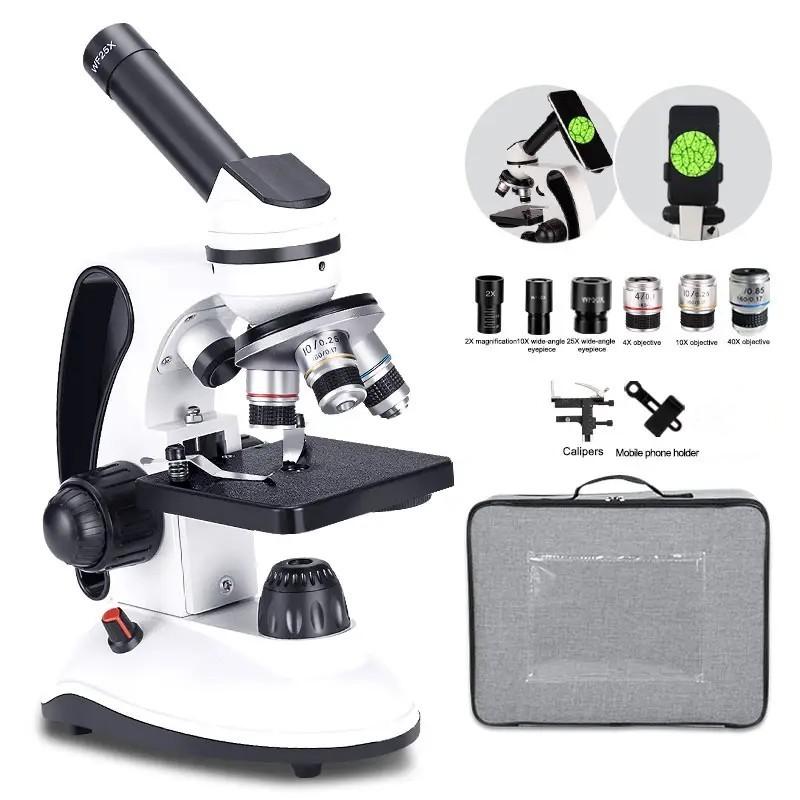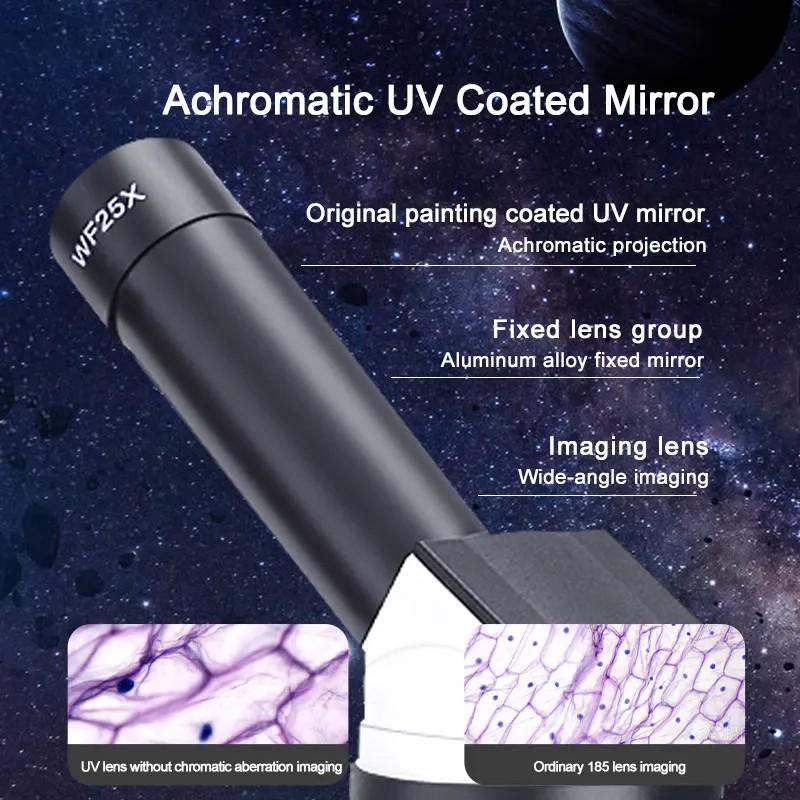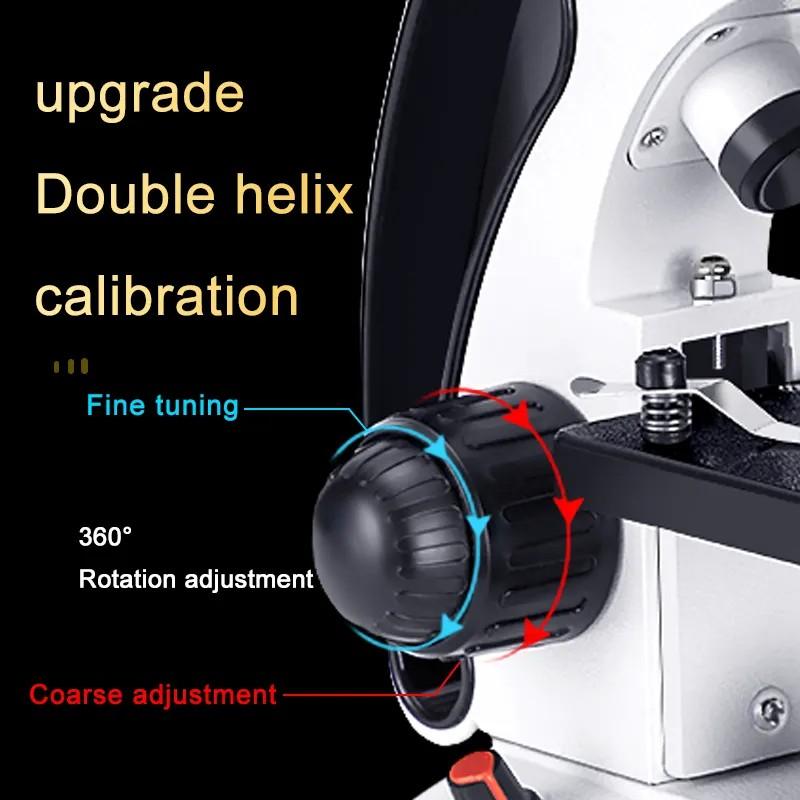What Microscope Can See Atoms ?
The only type of microscope that can see atoms is a scanning tunneling microscope (STM). This type of microscope uses a sharp metal tip to scan the surface of a sample and measures the flow of electrons between the tip and the sample. By mapping out the variations in electron flow, the STM can create an image of the atomic structure of the sample. The STM was invented in 1981 by Gerd Binnig and Heinrich Rohrer, for which they were awarded the Nobel Prize in Physics in 1986.
1、 Scanning Tunneling Microscope (STM)
The microscope that can see atoms is the Scanning Tunneling Microscope (STM). This type of microscope was invented in 1981 by Gerd Binnig and Heinrich Rohrer, who were awarded the Nobel Prize in Physics in 1986 for their work. The STM works by scanning a sharp metal tip over the surface of a sample, and measuring the flow of electrons between the tip and the sample. By measuring this flow of electrons, the STM can create a three-dimensional image of the surface of the sample, with atomic resolution.
The STM has revolutionized the field of nanotechnology, allowing scientists to study and manipulate individual atoms and molecules. It has been used to study a wide range of materials, including metals, semiconductors, and biological molecules. In recent years, researchers have used the STM to create new materials and devices, such as molecular switches and nanoscale transistors.
One of the latest developments in STM technology is the use of machine learning algorithms to analyze STM images. Researchers have developed algorithms that can automatically identify and classify different types of atoms and molecules based on their STM images. This has the potential to greatly speed up the process of analyzing STM data, and could lead to new discoveries in the field of nanotechnology.
Overall, the Scanning Tunneling Microscope is a powerful tool for studying the atomic and molecular world, and has opened up new avenues for research in nanotechnology and materials science.

2、 Atomic Force Microscope (AFM)
The microscope that can see atoms is the Atomic Force Microscope (AFM). This type of microscope uses a tiny probe to scan the surface of a sample and create a three-dimensional image of its atomic structure. The probe is so sensitive that it can detect the forces between individual atoms, allowing scientists to see the arrangement of atoms in a material.
The AFM has revolutionized the field of nanotechnology by allowing researchers to study and manipulate materials at the atomic level. It has been used to study a wide range of materials, including metals, semiconductors, and biological molecules.
One of the latest developments in AFM technology is the use of machine learning algorithms to analyze the data collected by the microscope. This allows researchers to quickly identify patterns in the atomic structure of a material and make predictions about its properties.
Another recent development is the use of AFM to study the behavior of individual molecules in real-time. This has led to new insights into the mechanisms of chemical reactions and the behavior of biological molecules such as proteins and DNA.
Overall, the AFM is a powerful tool for studying the atomic structure of materials and has led to many important discoveries in the field of nanotechnology.

3、 Transmission Electron Microscope (TEM)
The answer is "Transmission Electron Microscope (TEM)." TEM is a type of microscope that uses a beam of electrons to create an image of a sample. It is capable of magnifying objects up to 50 million times, making it possible to see atoms and even individual atomic bonds.
TEM works by passing a beam of electrons through a thin sample, which interacts with the electrons and scatters them in different directions. The scattered electrons are then collected and used to create an image of the sample. Because electrons have a much shorter wavelength than light, TEM can achieve much higher resolution than optical microscopes.
In recent years, there has been a lot of excitement around the use of TEM to study materials at the atomic scale. Researchers are using TEM to investigate the properties of materials such as graphene, which is a single layer of carbon atoms arranged in a hexagonal lattice. By studying the atomic structure of graphene using TEM, researchers are gaining new insights into its electronic and mechanical properties, which could have important applications in fields such as electronics and energy storage.
Overall, TEM is a powerful tool for studying materials at the atomic scale, and its capabilities continue to expand as new techniques and technologies are developed.

4、 Scanning Electron Microscope (SEM)
What microscope can see atoms? The Scanning Electron Microscope (SEM) is the answer. SEM is a powerful tool that uses a beam of electrons to create high-resolution images of the surface of a sample. It can magnify objects up to 500,000 times, allowing scientists to see details as small as a few nanometers.
SEM works by scanning a focused beam of electrons across the surface of a sample. As the electrons interact with the atoms in the sample, they produce signals that are detected and used to create an image. The resulting images are incredibly detailed and can reveal the structure and composition of the sample.
In recent years, there has been a growing interest in using SEM to study the behavior of individual atoms. While SEM cannot directly "see" individual atoms, it can be used to study their behavior indirectly. For example, by analyzing the way that electrons scatter off of atoms in a sample, scientists can learn about the arrangement and behavior of those atoms.
Overall, SEM is an incredibly powerful tool that has revolutionized our understanding of the microscopic world. As technology continues to advance, it is likely that SEM will continue to play a critical role in scientific research and discovery.








































